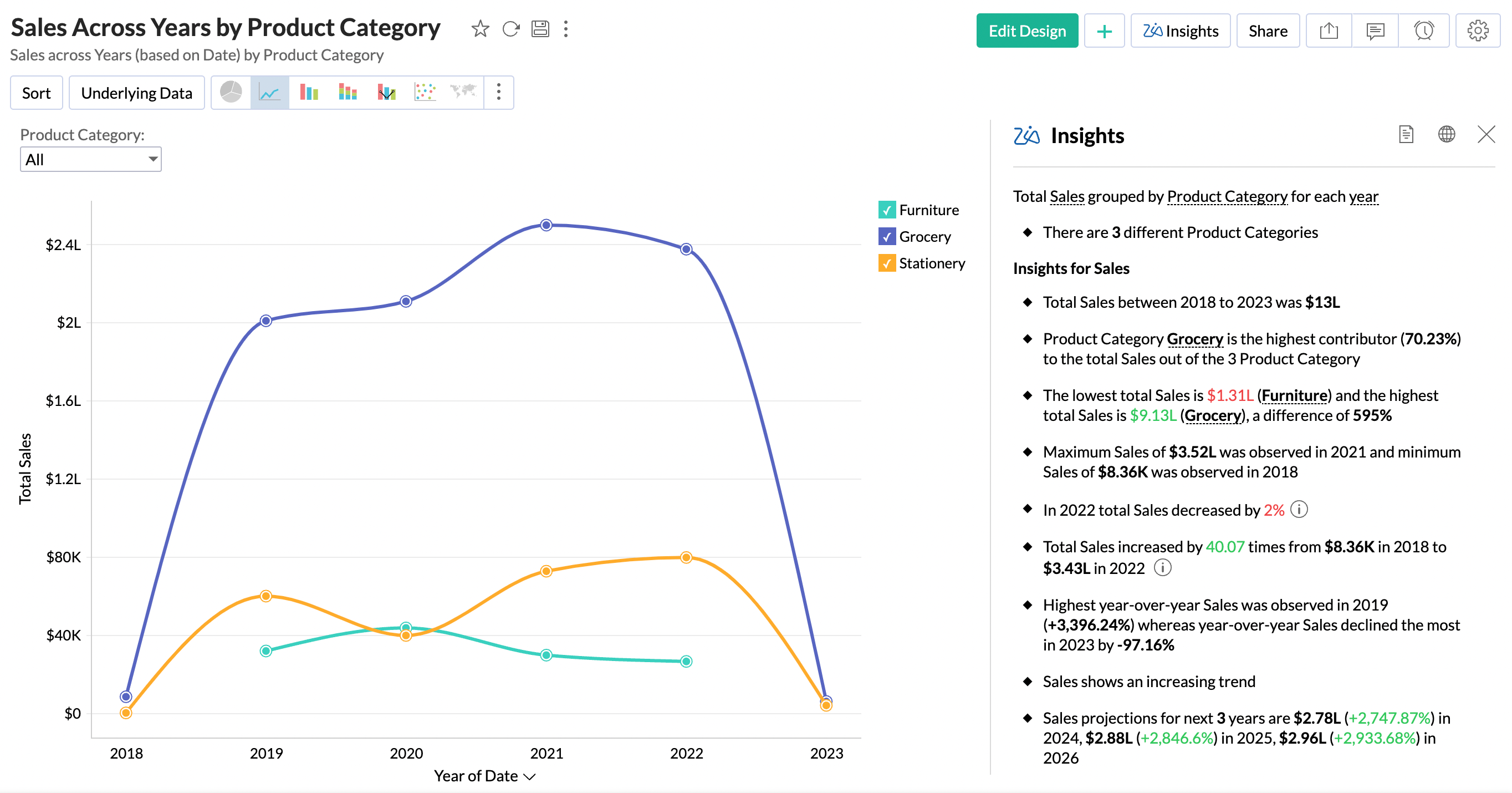
Automation has become a core component of BI and analytics, and is revolutionizing the way in which data is analyzed today. By taking on most of the heavy lifting from regular repetitive tasks, automation helps organizations drive focus on the more high-value activities at hand. In this blog, we'll cover how businesses can automate their end-to-end data pipeline with modern BI platforms.
The data pipeline in analytics can broadly be broken down into three stages:
1. Data import and preparation
2. Analysis and insights
3. Collaboration and action
Enabling automation in each of these stages can help handle large volumes of data with ease, maintain data quality and consistency over time, and accelerate your time to insight. Modern BI platforms support various automated functionalities in these stages.

Data import and preparation
According to studies, roughly 80% of analysis time is spent on data import and preparation. This is not surprising, given the:
Code-heavy data import process
Repeated authentication of data sources
Lack of standards for data preparation
Modern BI platforms offer a number of automation-powered capabilities to tackle these pain points. Let's take a closer look at a couple of them—auto-modeling and automated data transformation.
Auto-modeling
BI platforms today automatically analyze data objects and their relationships with one another. For instance, with auto joins, the platform intelligently identifies potential joins that could be performed among various tables that are imported into the platform.
Here's an example of this capability:

Automated data transformation
Transforming data into an ideal form for analysis is crucial for gaining good insights. In many cases, this becomes a repetitive time-consuming activity with every subsequent data import. With modern BI platforms, you can automate your data preparation process by setting it up only once. The platform intelligently tracks and monitors the transformations made to the data and automatically applies them for subsequent data imports.
In this case, you can check out rulesets, where various transformations applied to the data are kept track of. These transformations are highly customizable, and can be changed as per your evolving business needs.

Automating capabilities across data preparation is a powerful way of bringing down the time and effort spent in this stage of analysis. You can explore these capabilities in detail in our webinar on automation in BI and data analytics.
Data analysis and insights
Data analysis and insights is an active area in analytics, where innovation is constantly being made. Some key problems faced in this stage of analysis are:
Lack of business intelligence to discover relevant metrics
Inability to discover in-depth insights for precise decision-making
Manual updating of data in reports
Need for advanced capabilities to record changes in data
With today's AI and automation capabilities, there are many features on the market to tackle these problems.
Auto-analysis
Auto-analysis is a powerful capability that automatically discovers important metrics in datasets upon import, and auto-generates reports on them. This capability drastically cuts the time taken to generate reports manually, and brings users closer to insights. Here's an example of an auto-generated dashboard:
Automated insights
Automation in analytics is not just limited to auto-generation of reports—rather, BI platforms today go a step further by automating data insights as well. With natural language generation (NLG) capabilities, actionable insights can be automated in the form of digestible narratives that put users a step ahead in their decision-making process.
You can check out Zia Insights, Zoho Analytics' automated insights capability here:

Collaboration and action
Collaboration is the final leg of analysis—where data insights are distributed and consumed among stakeholders. When it comes to collaboration, businesses are known to face these key problems:
Delay in time to respond to key business changes
Inability to stay informed and relevant to business processes
Difficulty with presenting data insights in a comprehensible and digestible manner
Users can overcome these issues by automating immediate data alerts upon changes in important KPIs, helping them respond in time and stay relevant to business processes. This capability helps automatically deliver information to users in the context of workflows, rather than have them check in on these updates.
Data alerts
Data alerts helps users quickly take the right course of action when important changes in business metrics occur, such as reaching business targets or sudden anomalies in data. Here's an example of how users can define their business needs and get notified on key changes in their KPIs across a range of channels:

Conclusion
Automation brings with it many solutions to problems faced in data analytics. These capabilities democratize data and analytics by enabling people with even minimal tech know-how with the right tools to perform analysis. Watch this complete webinar to learn more about automation in modern BI platforms.
Sign up for Zoho Analytics today, or schedule a free personalized demo with one of our experts!
Comments